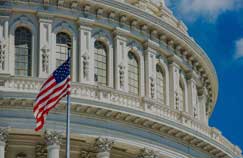Now that the field is set between incumbent New Jersey Governor Phil Murphy (D) and challenger Republican Jack Ciattarelli New Jersey's 6,109,844 registered voters take center stage. L2’s New Jersey voter data tells us that Democratic voters have an edge in the state but let’s look at how Former Governor Chris Christie (R) pulled off a victory in the 2009 general election against incumbent Governor Jon Corzine (D).
Let’s take a look at L2’s New Jersey voter file to find out how many Democrat, Republican and non-partisan voters are in the state.
- 2,394,444 Democratic voters
- 2,258,144 Non-partisan voters
- 1,380,322 Republican voters
Using L2’s voter mapping tool, here’s a look at where these voters are located around the state.

L2’s New Jersey voter file tells us that in order for a Republican candidate to attract enough voters to win, the candidate needs to attract non-partisan and Democratic voters. The last Republican Governor to hold office in New Jersey was Christ Christie who served from 2010 to 2018. Looking at who showed up to vote in 2009’s gubernatorial election, L2’s New Jersey voter file tells us that 1,857,787 voters showed up to vote. Of that nearly 1.8 million voters in 2009;
- 824,546 Democratic voters voted
- 382,939 Non-partisan voters voted
- 644,013 Republican voters voted
In order for any candidate to win November’s gubernatorial election, we need to look at where the largest concentrations of Democratic and Republican voters are in the state of New Jersey.
Broken down by Counties, L2’s voter data shows us that the top three counties with the most Republican voters are Ocean, Bergen and Monmouth counties.

(L2 voter file data showing Republican voter concentration)
Looking at Democratic voters, L2’s voter data shows us that the top three counties with the most Democratic voters are Essex, Bergen and Middlesex counties.

(L2 voter file data showing Democrat voter concentration)
L2’s voter data shows us that Democrats outnumber Republicans in New Jersey and for any Republican candidate to win, that candidate will need to attract non-partisan voters and Democratic voters. That’s how Chris Christie (R) won twice in the state.
In the 2017 New Jersey Governor’s race, roughly 2 million of the state’s 6 million voters showed up to vote representing roughly one-third of New Jersey’s voters. With low voter participation numbers, candidates will likely focus on driving turnout in key areas of the state. As you can see from the maps above, candidates would be smart to focus on areas where their party affiliation is high and drive turnout in those areas. When they say that all politics is local, it’s true. Chris Christie won by less than 100,000 votes. That 100,000 votes represents just a few communities that could swing an election either way.
Looking at the 2017 New Jersey Gubernatorial Election:
Largest Turnout County: Bergen County 10% of the Turnout
Gender Split: 52% Female // 46% Male
Married: 45%
Age Range: 40% are 65+ another 33.5% are 50-64 with the smallest group being 18-29 year old at 5%
Racial Breakdown: 63% White, 6.5% African American, 12% Hispanic
Home Owners: 63%
Likely Renter: 23%
Find out how your campaign or advocacy organization can access these data in New Jersey or Nationwide today by reaching out to Paul Westcott at L2 - paul.westcott@L2-data.com or call 202-679-7114






